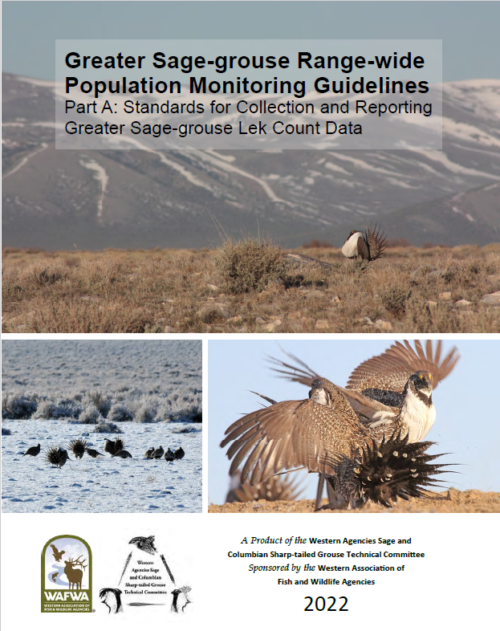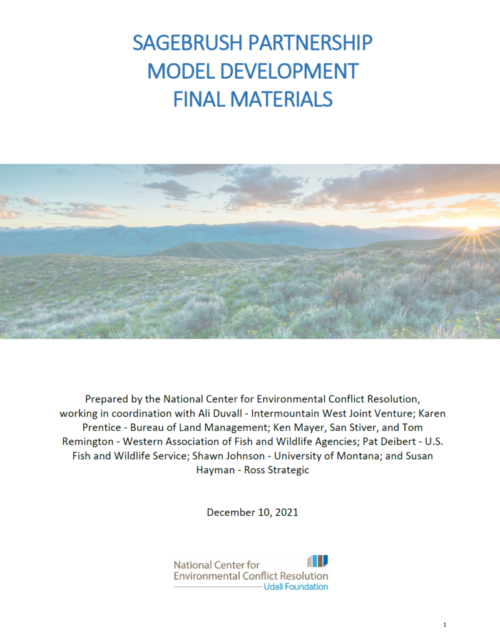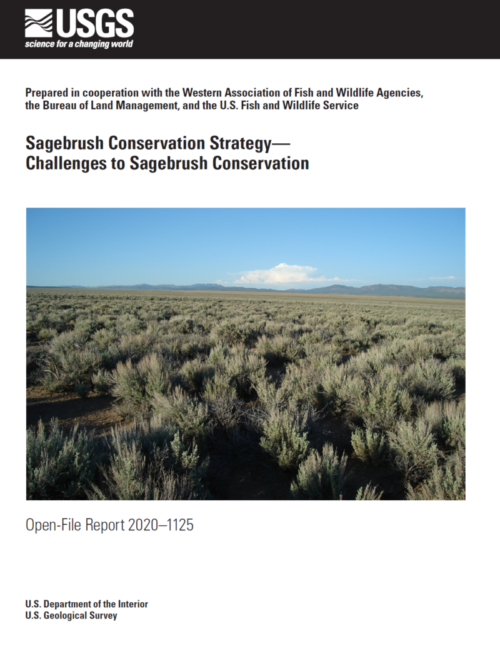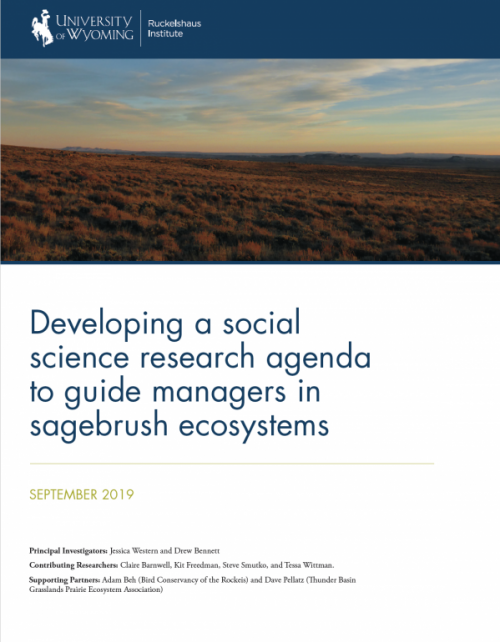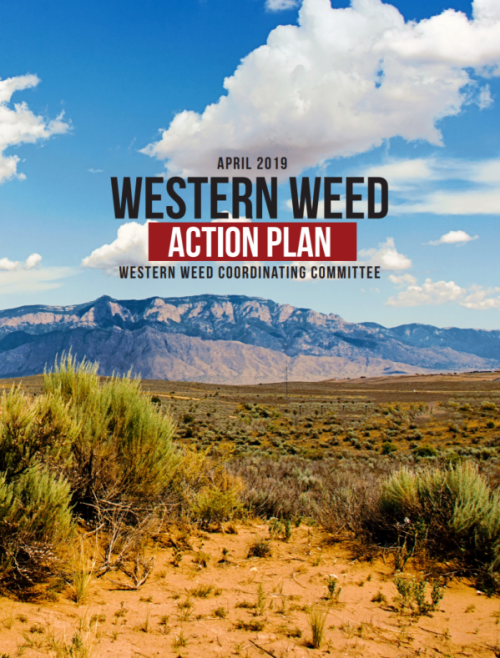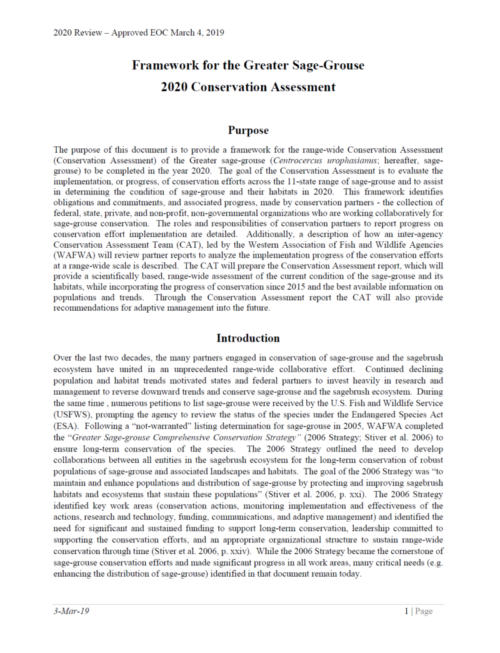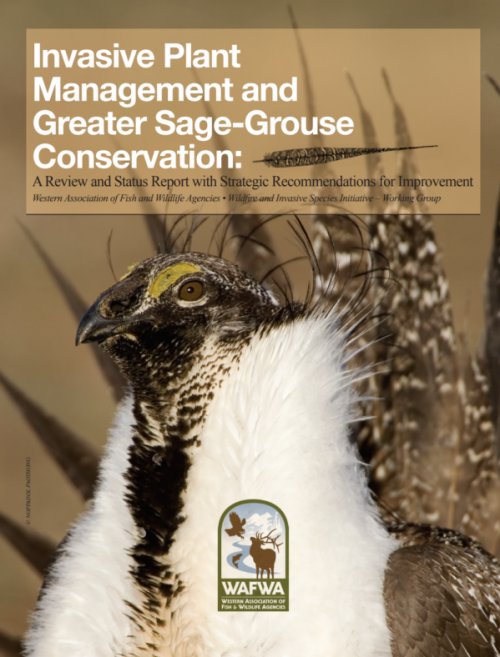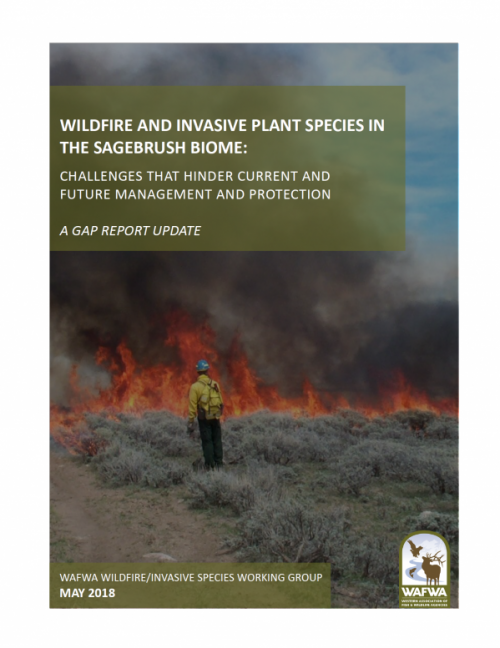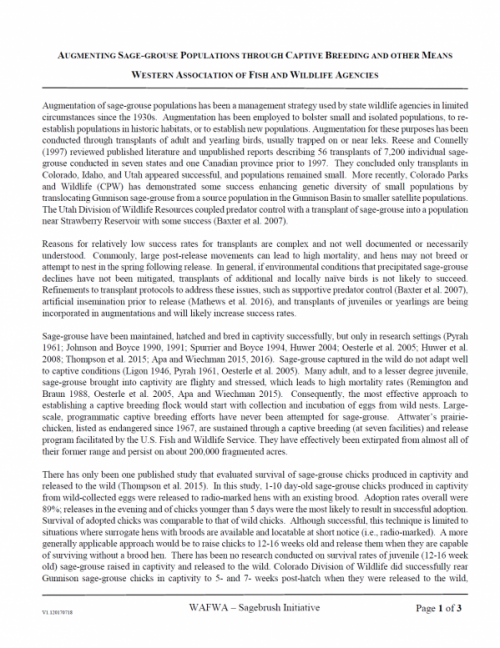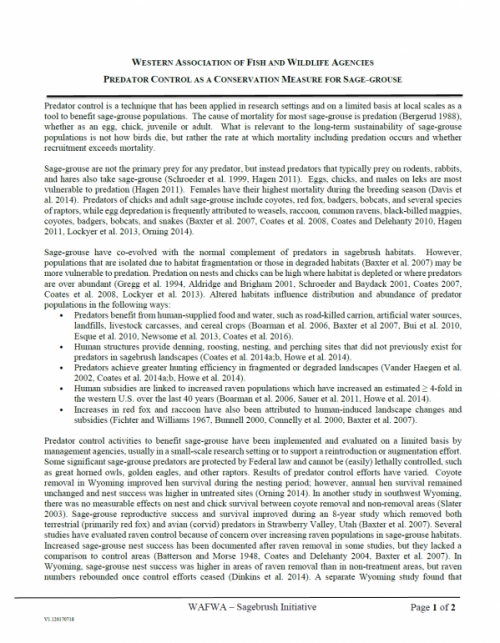Home
›
Greater Sage-grouse Range-wide Population Monitoring Guidelines
Posted by WAFWA on November 3, 2023
Counts of displaying males on leks have been the primary method to monitor sage-grouse (greater sage-grouse, Centrocercus urophasianus, and Gunnison sage-grouse, C. minimus) since scientific investigations of these species began, with the first lek counts recorded in the 1940s (Batterson and Morse 1948, Patterson 1952, Connelly and Schroeder 2007, Johnson…
Read More
SAGEBRUSH PARTNERSHIP MODEL DEVELOPMENT FINAL MATERIALS
Posted by WAFWA on December 10, 2021
The Western Association of Fish and Wildlife Agencies (WAFWA), in partnership with Bureau of Land Management (BLM), U.S. Fish & Wildlife Service (USFWS), U.S. Geological Survey (USGS), Intermountain West Joint Venture (IWJV), and other key conservation partners is developing a Sagebrush Conservation Strategy (Conservation Strategy) to guide collective efforts to…
Read More
Sagebrush Conservation Strategy—Challenges to Sagebrush Conservation
Posted by WAFWA on March 11, 2021
Abstract The sagebrush (Artemisia spp.) biome, its wildlife, and the services and benefits it provides people and local communities are at risk. Development in the sagebrush biome, for many purposes, has resulted in multiple and often cumulative negative impacts. These impacts, ranging from simple habitat loss to complex, interactive changes in…
Read More
Developing a social science research agenda to guide managers in sagebrush ecosystems
Posted by WAFWA on September 1, 2019
Sagebrush dominates much of the western United States, but invasive plants, altered fire regimes, exurban development, and other disturbances threaten the health of sagebrush ecosystems and the species that depend on them. Resource managers and other stakeholders face significant challenges in balancing healthy, functioning ecosystems while supporting human uses and…
Read More
Western Weed Action Plan
Posted by WAFWA on April 1, 2019
A Strategic Action Plan for the Sagebrush Biome This document was the vision of the participants of the Western Association of Fish and Wildlife Agencies (WAFWA), Western Invasive Weed Summit (2015 Summit), held in Boise, Idaho in the fall of 2015. Approximately 250 invasive plant species experts, private and federal…
Read More
Framework for the Greater Sage-Grouse 2020 Conservation Assessment
Posted by WAFWA on March 4, 2019
The purpose of this document is to provide a framework for the range-wide Conservation Assessment (Conservation Assessment) of the Greater sage-grouse (Centrocercus urophasianus; hereafter, sage-grouse) to be completed in the year 2020. The goal of the Conservation Assessment is to evaluate the implementation, or progress, of conservation efforts across the…
Read More
A Gap Report Update: Wildfire and Invasive Plant Species in the Sagebrush Biome
Posted by WAFWA on May 1, 2018
This Gap Report Update is the latest addition to the list of valuable products of the Wildfire and Invasive Species Working Group designed to help identify the challenges (gaps) and offer ideas to address those challenges. The Gap Report Update has something for every level, public and private, to consider…
Read More
WILDFIRE AND INVASIVE PLANT SPECIES IN THE SAGEBRUSH BIOME
Posted by WAFWA on May 1, 2018
In 2013, the Western Association of Fish and Wildlife Agencies was contracted by the U.S. Fish and Wildlife Service and Bureau of Land Management to establish a multi-agency Wildfire and Invasive Species Working Group (WG) and conduct a collaborative assessment of fire and invasive plant management options for the conservation…
Read More
White Paper: Augmenting Sage-grouse Populations Through Captive Breeding and Other Means
Posted by WAFWA on July 17, 2017
Augmentation of sage-grouse populations has been a management strategy used by state wildlife agencies in limited circumstances since the 1930s. Augmentation has been employed to bolster small and isolated populations, to re-establish populations in historic habitats, or to establish new populations. Augmentation for these purposes has been conducted through transplants…
Read More
White Paper: PREDATOR CONTROL AS A CONSERVATION MEASURE FOR SAGE-GROUSE
Posted by WAFWA on July 1, 2017
Predator control is a technique that has been applied in research settings and on a limited basis at local scales as a tool to benefit sage-grouse populations. The cause of mortality for most sage-grouse is predation (Bergerud 1988), whether as an egg, chick, juvenile or adult. What is…
Read More
